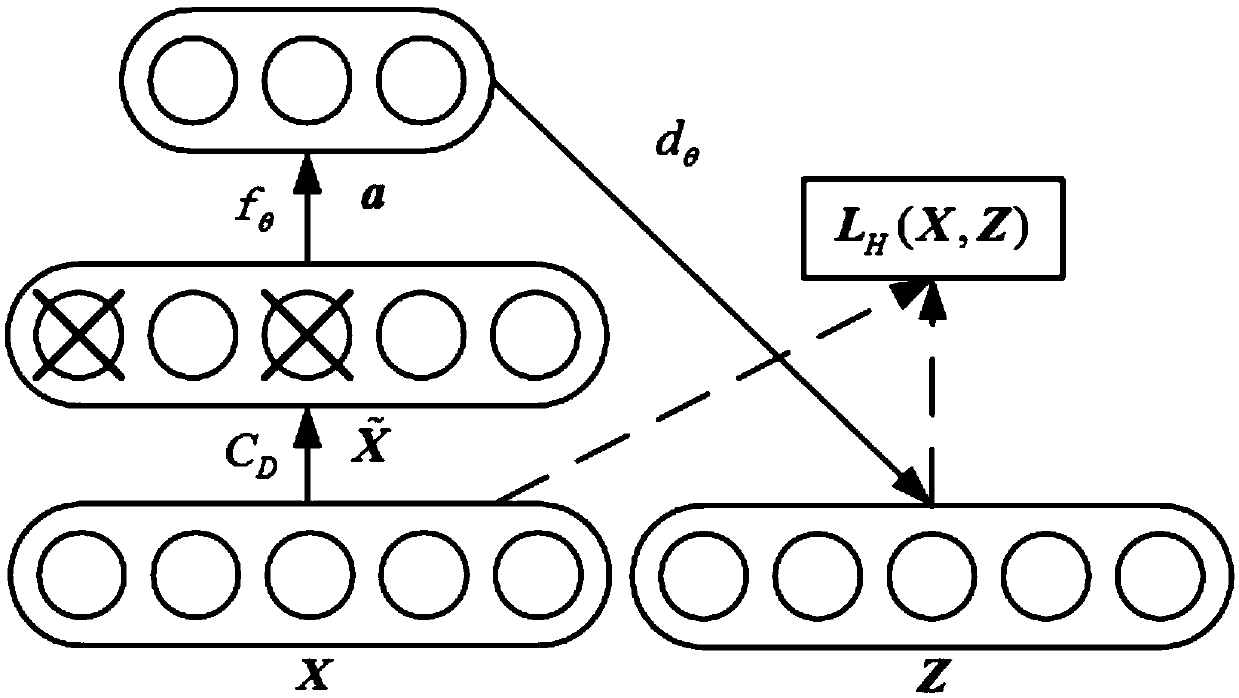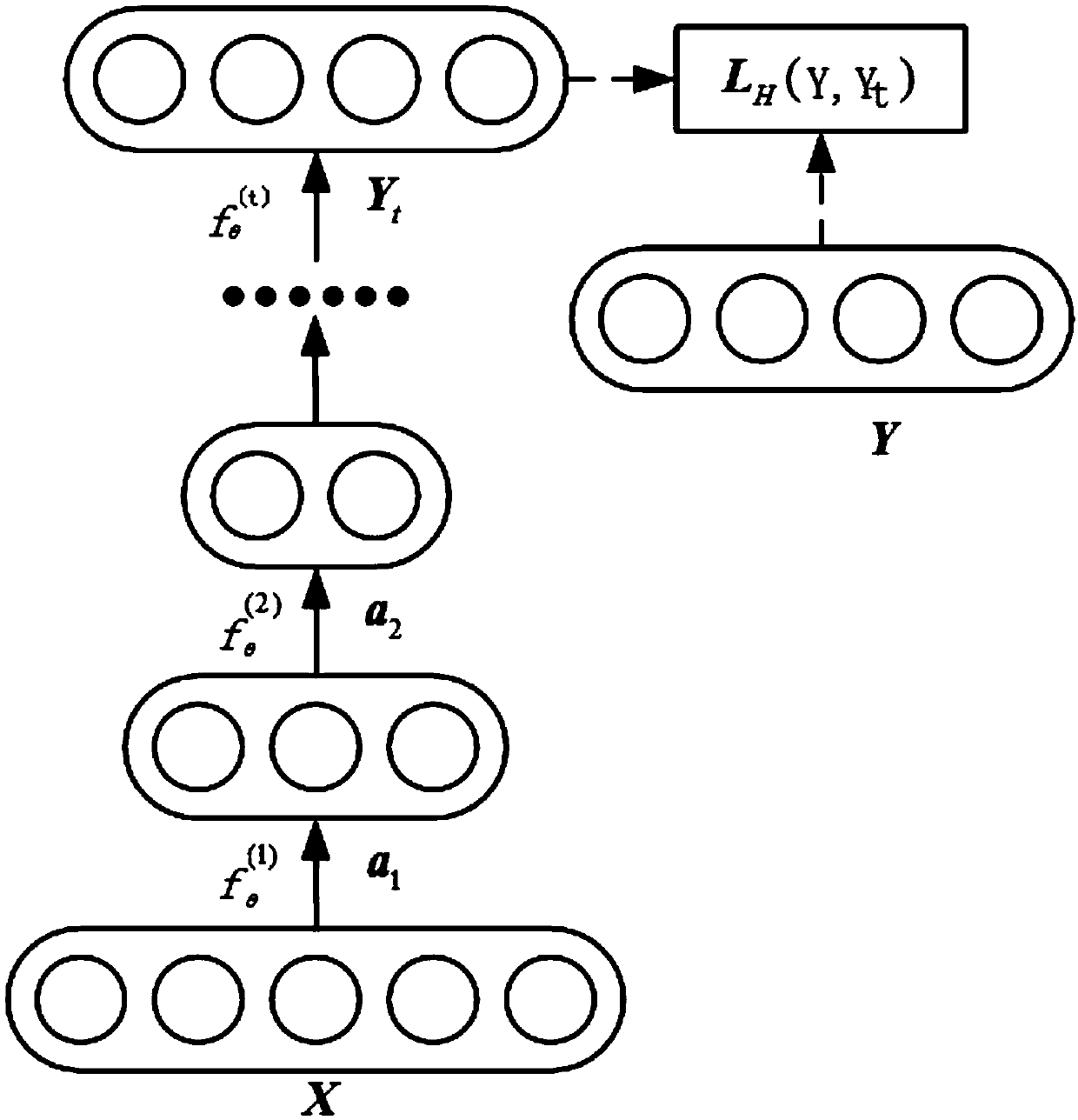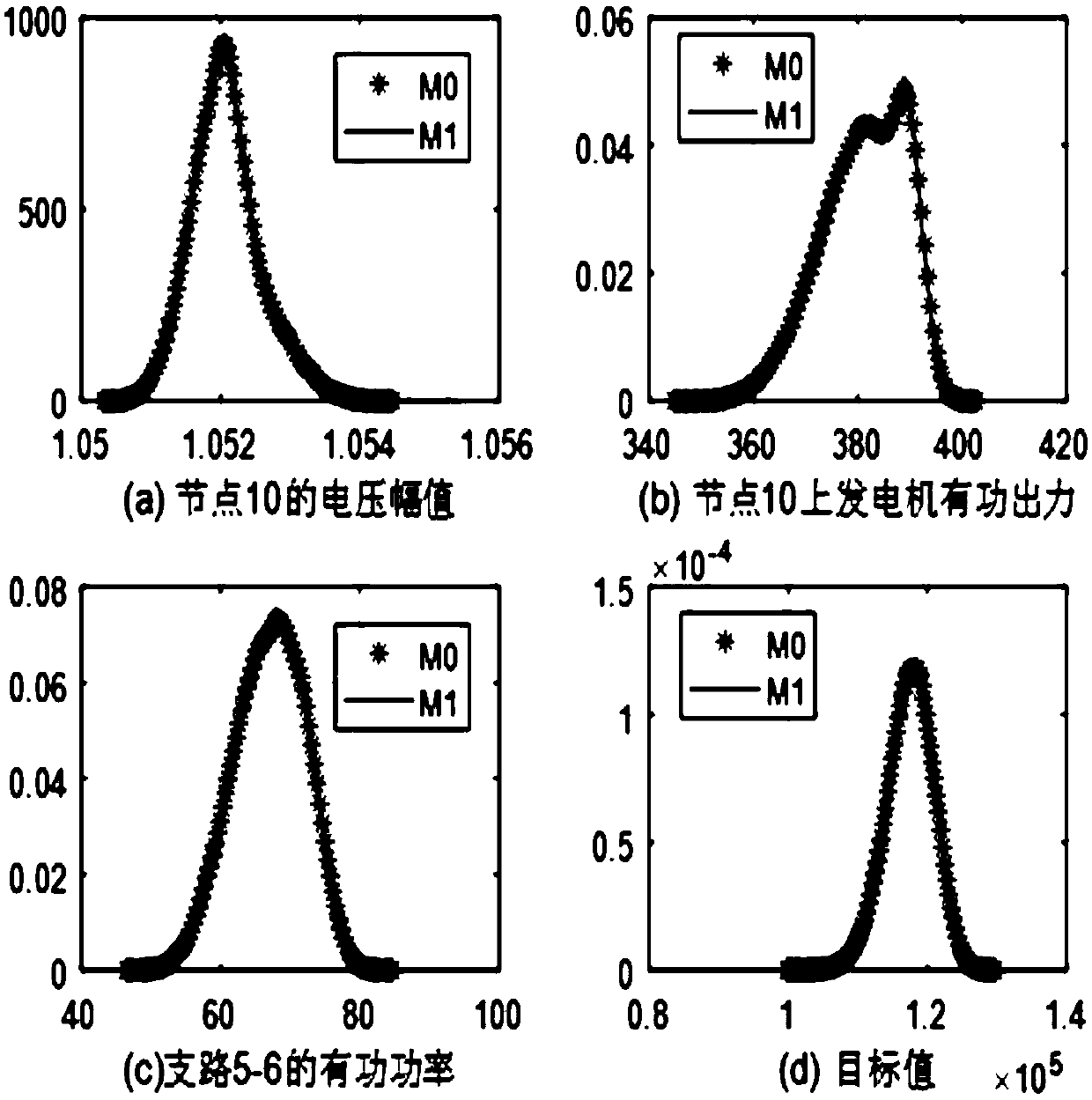Power system probabilistic-optimal power flow calculation method based on stacked denoising autoencoder
A noise-reducing automatic coding and optimal power flow technology, which is applied to AC networks, circuit devices, and AC network circuits with the same frequency from different sources, can solve problems such as long calculation time and inability to handle probabilistic optimal power flow
- Summary
- Abstract
- Description
- Claims
- Application Information
AI Technical Summary
Problems solved by technology
Method used
Image
Examples
Embodiment 1
[0090] see figure 1 and figure 2 , a probabilistic optimal power flow calculation method for power systems based on stacked denoising autoencoders, mainly includes the following steps:
[0091] 1) Establish the SDAE optimal power flow model. Utilizing the characteristics of SDAE's deep stack structure and encoding and decoding process, which can effectively mine the high-order characteristics of the nonlinear optimal power flow model, an optimal power flow model based on SDAE is established.
[0092] Considering that the optimal power flow model contains nonlinear equality and inequality constraints, which lead to complex nonlinear characteristics between input and output, a combination of maximum and minimum normalized data preprocessing methods and a small-batch gradient descent learning algorithm based on momentum learning rates is proposed. Deep neural network training method to improve training accuracy and speed. The trained SDAE optimal power flow model can non-iter...
Embodiment 2
[0175] see image 3 a to image 3 d, A simulation experiment of a power system probabilistic optimal power flow calculation method based on a stacked denoising autoencoder, which mainly includes the following steps:
[0176] 1) Optimal power flow sample acquisition.
[0177] In this embodiment, the IEEE118 standard system is used for simulation. In this embodiment, wind farms are introduced on busbars 59, 80 and 90, and the maximum outputs of the wind farms are 220, 200, and 260MW respectively, and photovoltaic power stations are introduced on busbars 13, 14, 16 and 23, and the maximum outputs of the photovoltaic power stations are respectively 100MW. , 150, 100, 150MW.
[0178] Among them, it is assumed that the wind speed obeys the two-parameter Weibull distribution, its scale parameter is 2.016, and its shape parameter is 5.089. The light intensity obeys the Beta distribution. The shape parameters of the photovoltaic power station and the cut-in wind speed, rated wind s...
PUM
 Login to View More
Login to View More Abstract
Description
Claims
Application Information
 Login to View More
Login to View More - R&D
- Intellectual Property
- Life Sciences
- Materials
- Tech Scout
- Unparalleled Data Quality
- Higher Quality Content
- 60% Fewer Hallucinations
Browse by: Latest US Patents, China's latest patents, Technical Efficacy Thesaurus, Application Domain, Technology Topic, Popular Technical Reports.
© 2025 PatSnap. All rights reserved.Legal|Privacy policy|Modern Slavery Act Transparency Statement|Sitemap|About US| Contact US: help@patsnap.com



